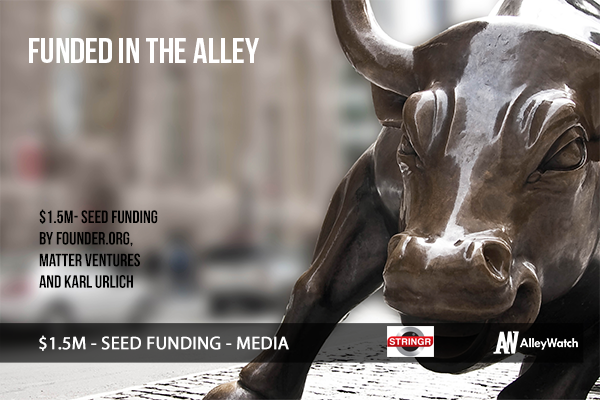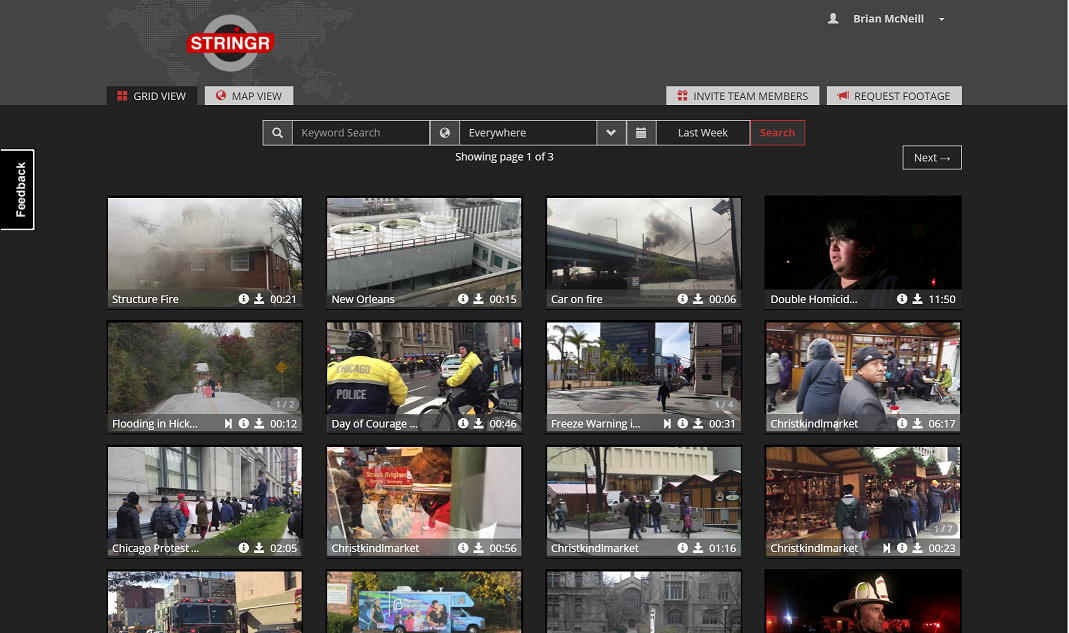Do you have unappreciated videographer skills that have gone unnoticed? Do you have a secret passion to follow the big stories and shoot your own footage? Well not only can you follow these stories, with Stringr, media organizations can use your masterful footage and actually pay you for it. Simply open the app to see where there is a story to be filmed and upload it to Stringr where it can be used. But don’t worry; if it’s selected to by a media source you’ll be paid for your hard work. Featured in TechCrunch, Forbes, Entrepreneur Magazine and more, this up-and-coming startup is changing how we see the news.
Coming off a recent round of funding, CEO and cofounder Lindsay Stewart lets us know how they “strung” together their company as well as the details of the funding.

Who were your investors and how much did you raise?
We raised a seed round of $1.5M from a group of investors that included Founder.org, Matter Ventures and Karl Urlich, Vice Dean of Innovation at the Wharton School of the University of Pennsylvania.
Tell us about your product or service.
Stringr is an online video marketplace that provides news organizations and media companies with a platform to source custom footage quick and efficiently. For example, a news organization could submit a request for breaking news footage and get it in an hour or less. Stringr is growing quickly, and the platform currently boasts a network of more than 11,000 highly engaged professional and amateur videographers nationwide.
What inspired you to start the company?
Prior to founding Stringr, I worked in the news industry for more than a decade at outlets including Fox, ABC and Bloomberg. I saw first hand the need for a system where news outlets could source relevant footage—fast. Along with my Co-Founder Brian McNeill, we founded Stringr to fix that broken, antiquated newsroom model. Stringr offers a technological solution to correct this problem – one that instantaneously connects newsrooms to a network of videographers who can provide the curated, high-quality video these outlets need.
How is it different?
In the broken “classic” stringer model, freelance photographers, called stringers, provide footage every day in their localized market. They often shoot footage on spec and then call potential customers to sell it.
Our platform is different and more efficient for all parties involved. Stringr connects newsrooms to thousands of professional and amateur freelance videographers at one time, and allows videographers to have access to a larger set of customers.
What market are you targeting and how big is it?
The overall market for 3rd party footage across all verticals is very big, sitting at an estimated $82B.
Stringr is focusing on the editorial market first, which represents a $3.6B opportunity. We’re excited by the marketplace potential.
What’s your business model?
Stringr sells video to major media customers in two ways—by selling bundles of clips or by sharing in the revenue their customers generate from Stringr videos. When customers purchase a specific piece of footage, Stringr pays the videographer the next business day.
What was the funding process like?
An adventure! Silicon Valley investors often don’t know much about the overall media landscape. But through a targeted approach, we found investors who really understand the potential for video and how Stringr will be a major player.
What are the biggest challenges that you faced while raising capital?
It’s time consuming. You’re out raising money and building a business simultaneously. Lots of balls in the air make for an exciting challenge.
What factors about your business led your investors to write the check?
They liked our team, our domain and our operational expertise.
Our team’s background is particularly unique – I personally worked in the media industry for years and have hands on experience that I’m bringing to Stringr.
Investors also liked the marketplace dynamics. When marketplaces win, they win big.
What are the milestones you plan to achieve in the next six months?
We’re well on our way, but our first goal is to continue to grow nationwide. We want to grow our videographer base all over the US, and we’re well on our way. It’s not just about having a base of videographers in major markets, but all over the country in what I like to call “dark zones” – places where media outlets would not usually have a camera crew available. After that, we’re looking to expand to select international markets.
What advice can you offer companies in New York that do not have a fresh injection of capital in the bank?
I’d tell them to hold on. Keep building your product and use whatever scant resources you have judiciously. Also, get out into your community as much as you can and keep circulating your concept and product. When people know what you’re doing, they’re more likely to get excited. The might even have some great ideas for you.
Where do you see the company going now over the near term?
We’re staying committed to providing great video to our customers and recruiting great videographers. Sounds simple, but we want to get better and better.
Where is your favorite place to enjoy the fall weather in the area?
Wow! Love so many places in NYC—but love grabbing a bite at Malatesta in the West Village. I really also like Le District near the South Street Seaport.





